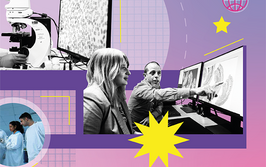The Economics of Personalized Medicine
Can companies investing in innovative liquid biopsy technologies continue to ignore healthcare economics?
As an economics-trained executive of a cancer diagnostics company, I often struggle to rationalize the business model and economic considerations of our healthcare environment. Most people are familiar with the statistic (ostensibly) stating that 90 percent of a patient’s healthcare costs are incurred during the last six months of their life. We also know that the value derived from that spend – as measured by patient quality of life during that period – is often questionable. Yet companies continue to develop products and services that feed into and worsen that statistic, rather than attempting to improve it. We routinely hear of a new “miraculous” chemotherapy drug that costs US$100,000 per regimen and extends patients’ lives by an average of about three months. This leads us to a complex question: How do we balance clinical, emotional, moral, and economic considerations? Are we, as a society, directing our resources in a sensible manner?
The field of liquid biopsy is one of the most exciting and promising areas in cancer diagnostics. As we have learned, the biology of malignant tumors is constantly evolving – but they give us one easy way to keep an eye on those changes: they shed DNA “breadcrumbs” into the bloodstream. The ability to detect tumor-based genetic changes via a simple, noninvasive blood test (a liquid biopsy) provides critical insight into the patient’s current clinical state. Companies have seized on this concept, raising hundreds of millions of dollars to develop sophisticated technologies that identify these changes and aid clinicians in treating patients. Some of the leading players have spent millions to develop broad panels with hundreds of genes, running on sophisticated next generation sequencers with complex bioinformatics platforms. As a result, these tests are expensive – $5,000–8,000 per test.
There are two key applications of liquid biopsies, each with very different target audiences, clinical needs, usage patterns, and related economics.
The first application is screening. One of the key factors in a successful battle against cancer is early detection. Just as in other areas where preventative medicine plays a prominent role, the ability to identify genetic abnormalities that may cause cancer – before the disease ever arises – is an attractive concept. As a once-in-a-lifetime test, clinicians treating patients may recommend that they and their family members get screened using large panel tests to identify potential risk. Payers may agree to cover the cost, balancing the high price against the potential benefit of early detection; indeed, it’s likely that patients who can afford such prices themselves will want to “purchase” this insight into their future health risks.
The second application is monitoring. Science has taught us that cancer constantly evolves – whether based on genetics, outside factors (such as smoking or sunshine), or the very chemotherapy intended to battle it. A treatment that works today may become ineffective tomorrow. And even patients fortunate enough to achieve remission still face the terrifying possibility of the cancer’s return. The good news is that, in either scenario, those genetic changes may present in the blood stream for “early warning” detection via liquid biopsy.
Timing is everything. Catching these changes early is critical, so it is imperative to constantly monitor the patient – both during treatment to quickly spot genetic changes that might render chemo ineffective and after remission in case the cancer returns. Much like diabetes patients constantly monitor their blood sugar levels to identify spikes and drops, cancer patients should constantly be on the lookout for genetic changes in their disease so that doctors can respond before it’s too late.
The problem is, these sophisticated tests are very expensive. A clinician, payer, or even a patient may be able to stomach a one-time $5,000 screening test. But there is no doctor, and certainly no payer, who, in the current economic environment (which is unlikely to improve in the near future), will agree to pay for this test more than once. And so, although this technology is sustainable for screening, it’s far outside the realms of economic reality as a tool for ongoing cancer monitoring. In that sense, there is a major disconnect between the technology’s ability and its applicability. Payers realize this and are reluctant to reimburse for these large panel tests; this is part of the reason many of these companies raise such vast sums of money, with investors essentially subsidizing the payment of these tests because the market will not.
The other disconnect revolves around the actionability of the tests’ results. Every piece of diagnostic information is useless if it doesn’t drive a clinical decision. A panel of hundreds of genes may be relevant as a “catch-all, fire in all directions” tool for patients seeking to turn over every stone in their genetic footprint. But for specific cancer patients with a diagnosed disease, the universe of genetics-driven treatments available – and thus, the actual number of relevant, actionable genes to be interrogated – is limited. So, for monitoring, large panels present a tremendous overkill.
Therefore, for the purpose of patient monitoring, we need targeted liquid biopsy solutions with panels that deliver focused, clinically actionable information at a cost that enables regular monitoring. Panels consisting of a small subset of clinically actionable genes relevant to the specific patient’s type of cancer, using less complex and costly technologies, result in tests at a fraction of the price point of other broad NGS panels. As in many areas, there is no one-size-fits-all technology. Though some players focus on broad panels that provide exciting tools for patient screening, others take into consideration economic factors, creating low-cost tests that are economically feasible for repeat testing.
With the skyrocketing costs of healthcare, I believe solutions that embrace, rather than ignore, economic considerations will play a prominent role in patient monitoring through liquid biopsies.
Ilan Danieli is Chief Executive Officer of Precipio, New Haven, USA




















